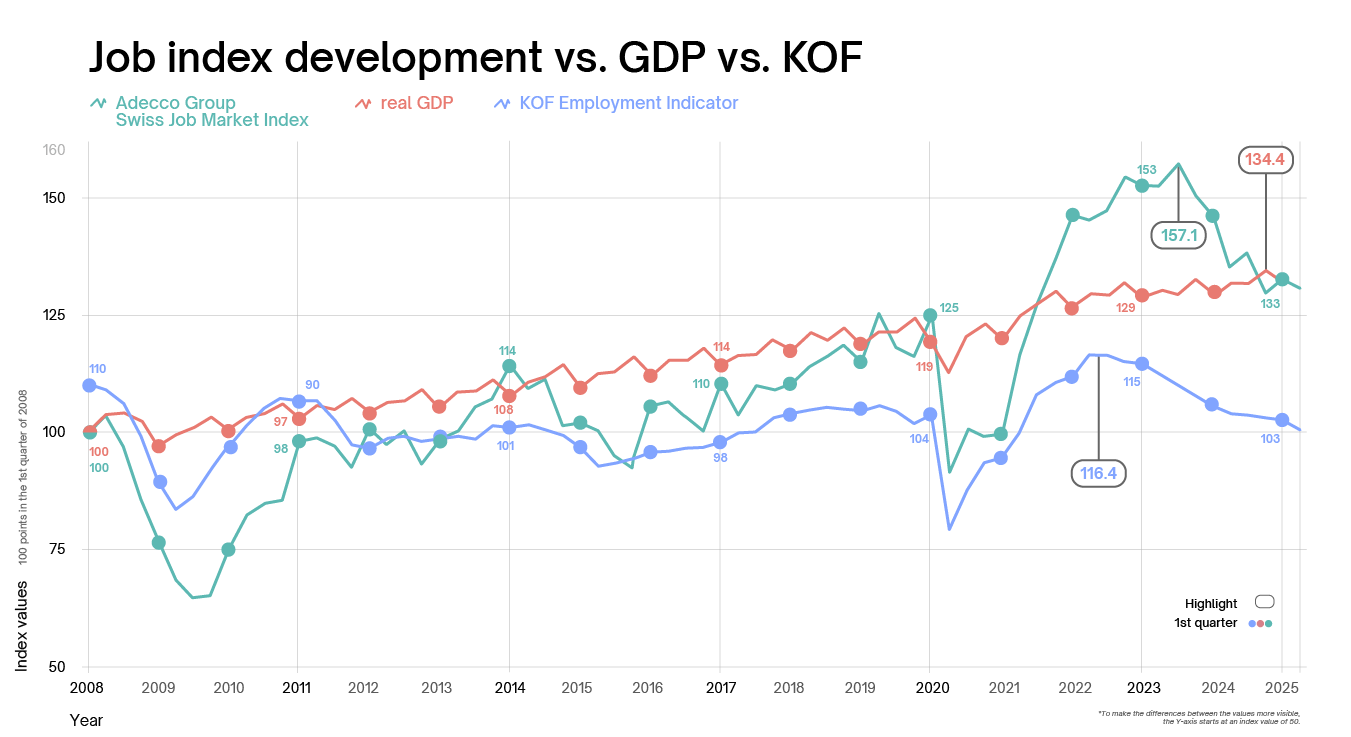Adecco Group Swiss Job Market Index
In collaboration with the Swiss Job Market Monitor (SMM) at the Institute of Sociology at the University of Zurich, The Adecco Group Switzerland publishes the Adecco Group Swiss Job Market Index (ASJMI) via press and the Internet four times a year. This is a scientifically sound and comprehensive measure of the evolution of vacancies. Regular updates enable continuous monitoring and analysis of changes and trends in the Swiss job market.
Publications



Job Index Archive
The Job Index, GDP and KOF indicator offer three perspectives on the labour market
The Adecco Group Swiss Job Market Index tracks the development of job vacancies in Switzerland, providing insight into labour demand. By presenting real gross domestic product (GDP) and the KOF employment indicator, it provides a comprehensive overview of the state of the economy and the labour market. Real GDP is based on the production approach and measures the value of all goods and services produced in Switzerland at constant prices. An index value above 100 for either the Job Market Index or GDP indicates an increase compared to the baseline value in the first quarter of 2008. The KOF Employment Indicator, which is based on company surveys, shows whether companies are more likely to increase or reduce their workforce over the next three months. A value above 100 for the KOF Employment Indicator means that more companies expect to increase their workforce than reduce it. While GDP describes the overall economic situation, and the KOF Employment Indicator reflects companies' expectations, the Job Index specifically shows how many jobs are actually being advertised, and thus reacts particularly quickly to economic changes.

Job Index Information




